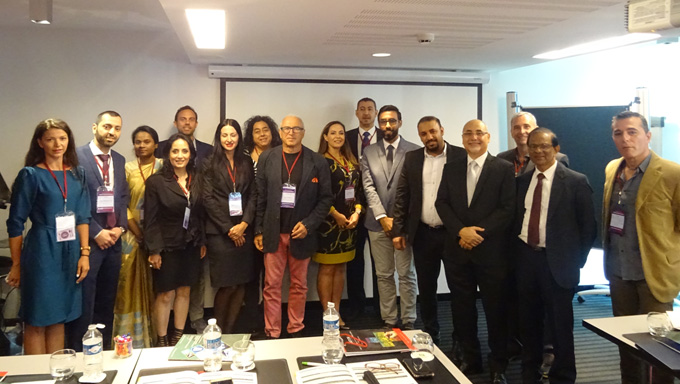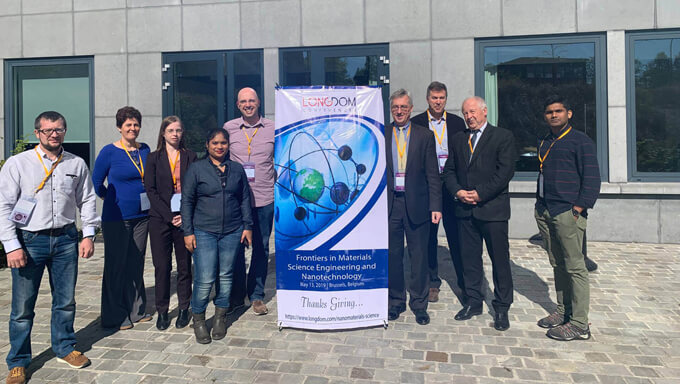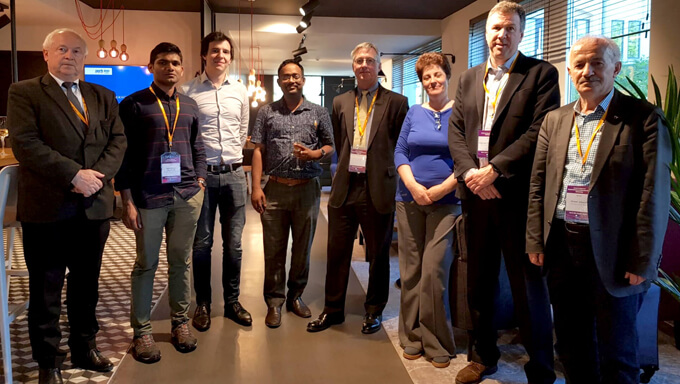A PHP Error was encountered
Severity: Notice
Message: Undefined index: start_date
Filename: blocks/page-banner.php
Line Number: 31
Backtrace:
File: /var/www/html/application/modules/webinars/views/blocks/page-banner.php
Line: 31
Function: _error_handler
File: /var/www/html/application/third_party/MX/Loader.php
Line: 364
Function: include
File: /var/www/html/application/third_party/MX/Loader.php
Line: 306
Function: _ci_load
File: /var/www/html/application/core/MY_Loader.php
Line: 121
Function: view
File: /var/www/html/application/modules/webinars/controllers/Home.php
Line: 40
Function: webinar_template
File: /var/www/html/index.php
Line: 317
Function: require_once
A PHP Error was encountered
Severity: Notice
Message: Undefined index: end_date
Filename: blocks/page-banner.php
Line Number: 32
Backtrace:
File: /var/www/html/application/modules/webinars/views/blocks/page-banner.php
Line: 32
Function: _error_handler
File: /var/www/html/application/third_party/MX/Loader.php
Line: 364
Function: include
File: /var/www/html/application/third_party/MX/Loader.php
Line: 306
Function: _ci_load
File: /var/www/html/application/core/MY_Loader.php
Line: 121
Function: view
File: /var/www/html/application/modules/webinars/controllers/Home.php
Line: 40
Function: webinar_template
File: /var/www/html/index.php
Line: 317
Function: require_once
A PHP Error was encountered
Severity: Notice
Message: Undefined index: start_date
Filename: blocks/page-banner.php
Line Number: 39
Backtrace:
File: /var/www/html/application/modules/webinars/views/blocks/page-banner.php
Line: 39
Function: _error_handler
File: /var/www/html/application/third_party/MX/Loader.php
Line: 364
Function: include
File: /var/www/html/application/third_party/MX/Loader.php
Line: 306
Function: _ci_load
File: /var/www/html/application/core/MY_Loader.php
Line: 121
Function: view
File: /var/www/html/application/modules/webinars/controllers/Home.php
Line: 40
Function: webinar_template
File: /var/www/html/index.php
Line: 317
Function: require_once
A PHP Error was encountered
Severity: Notice
Message: Undefined index: city_name
Filename: blocks/page-banner.php
Line Number: 42
Backtrace:
File: /var/www/html/application/modules/webinars/views/blocks/page-banner.php
Line: 42
Function: _error_handler
File: /var/www/html/application/third_party/MX/Loader.php
Line: 364
Function: include
File: /var/www/html/application/third_party/MX/Loader.php
Line: 306
Function: _ci_load
File: /var/www/html/application/core/MY_Loader.php
Line: 121
Function: view
File: /var/www/html/application/modules/webinars/controllers/Home.php
Line: 40
Function: webinar_template
File: /var/www/html/index.php
Line: 317
Function: require_once
A PHP Error was encountered
Severity: Notice
Message: Undefined index: country_name
Filename: blocks/page-banner.php
Line Number: 42
Backtrace:
File: /var/www/html/application/modules/webinars/views/blocks/page-banner.php
Line: 42
Function: _error_handler
File: /var/www/html/application/third_party/MX/Loader.php
Line: 364
Function: include
File: /var/www/html/application/third_party/MX/Loader.php
Line: 306
Function: _ci_load
File: /var/www/html/application/core/MY_Loader.php
Line: 121
Function: view
File: /var/www/html/application/modules/webinars/controllers/Home.php
Line: 40
Function: webinar_template
File: /var/www/html/index.php
Line: 317
Function: require_once
A PHP Error was encountered
Severity: Notice
Message: Undefined index: pre_title
Filename: blocks/page-banner.php
Line Number: 44
Backtrace:
File: /var/www/html/application/modules/webinars/views/blocks/page-banner.php
Line: 44
Function: _error_handler
File: /var/www/html/application/third_party/MX/Loader.php
Line: 364
Function: include
File: /var/www/html/application/third_party/MX/Loader.php
Line: 306
Function: _ci_load
File: /var/www/html/application/core/MY_Loader.php
Line: 121
Function: view
File: /var/www/html/application/modules/webinars/controllers/Home.php
Line: 40
Function: webinar_template
File: /var/www/html/index.php
Line: 317
Function: require_once
A PHP Error was encountered
Severity: Notice
Message: Undefined index: main_title
Filename: blocks/page-banner.php
Line Number: 45
Backtrace:
File: /var/www/html/application/modules/webinars/views/blocks/page-banner.php
Line: 45
Function: _error_handler
File: /var/www/html/application/third_party/MX/Loader.php
Line: 364
Function: include
File: /var/www/html/application/third_party/MX/Loader.php
Line: 306
Function: _ci_load
File: /var/www/html/application/core/MY_Loader.php
Line: 121
Function: view
File: /var/www/html/application/modules/webinars/controllers/Home.php
Line: 40
Function: webinar_template
File: /var/www/html/index.php
Line: 317
Function: require_once
A PHP Error was encountered
Severity: Notice
Message: Undefined index: main_title
Filename: blocks/page-banner.php
Line Number: 45
Backtrace:
File: /var/www/html/application/modules/webinars/views/blocks/page-banner.php
Line: 45
Function: _error_handler
File: /var/www/html/application/third_party/MX/Loader.php
Line: 364
Function: include
File: /var/www/html/application/third_party/MX/Loader.php
Line: 306
Function: _ci_load
File: /var/www/html/application/core/MY_Loader.php
Line: 121
Function: view
File: /var/www/html/application/modules/webinars/controllers/Home.php
Line: 40
Function: webinar_template
File: /var/www/html/index.php
Line: 317
Function: require_once
- Home -

A PHP Error was encountered
Severity: Notice
Message: Undefined index: start_date
Filename: blocks/slider.php
Line Number: 20
Backtrace:
File: /var/www/html/application/modules/webinars/views/blocks/slider.php
Line: 20
Function: _error_handler
File: /var/www/html/application/third_party/MX/Loader.php
Line: 364
Function: include
File: /var/www/html/application/third_party/MX/Loader.php
Line: 306
Function: _ci_load
File: /var/www/html/application/modules/webinars/views/index/index.php
Line: 1
Function: view
File: /var/www/html/application/third_party/MX/Loader.php
Line: 364
Function: include
File: /var/www/html/application/third_party/MX/Loader.php
Line: 306
Function: _ci_load
File: /var/www/html/application/core/MY_Loader.php
Line: 122
Function: view
File: /var/www/html/application/modules/webinars/controllers/Home.php
Line: 40
Function: webinar_template
File: /var/www/html/index.php
Line: 317
Function: require_once
A PHP Error was encountered
Severity: Notice
Message: Undefined index: end_date
Filename: blocks/slider.php
Line Number: 21
Backtrace:
File: /var/www/html/application/modules/webinars/views/blocks/slider.php
Line: 21
Function: _error_handler
File: /var/www/html/application/third_party/MX/Loader.php
Line: 364
Function: include
File: /var/www/html/application/third_party/MX/Loader.php
Line: 306
Function: _ci_load
File: /var/www/html/application/modules/webinars/views/index/index.php
Line: 1
Function: view
File: /var/www/html/application/third_party/MX/Loader.php
Line: 364
Function: include
File: /var/www/html/application/third_party/MX/Loader.php
Line: 306
Function: _ci_load
File: /var/www/html/application/core/MY_Loader.php
Line: 122
Function: view
File: /var/www/html/application/modules/webinars/controllers/Home.php
Line: 40
Function: webinar_template
File: /var/www/html/index.php
Line: 317
Function: require_once
A PHP Error was encountered
Severity: Notice
Message: Undefined index: start_date
Filename: blocks/slider.php
Line Number: 28
Backtrace:
File: /var/www/html/application/modules/webinars/views/blocks/slider.php
Line: 28
Function: _error_handler
File: /var/www/html/application/third_party/MX/Loader.php
Line: 364
Function: include
File: /var/www/html/application/third_party/MX/Loader.php
Line: 306
Function: _ci_load
File: /var/www/html/application/modules/webinars/views/index/index.php
Line: 1
Function: view
File: /var/www/html/application/third_party/MX/Loader.php
Line: 364
Function: include
File: /var/www/html/application/third_party/MX/Loader.php
Line: 306
Function: _ci_load
File: /var/www/html/application/core/MY_Loader.php
Line: 122
Function: view
File: /var/www/html/application/modules/webinars/controllers/Home.php
Line: 40
Function: webinar_template
File: /var/www/html/index.php
Line: 317
Function: require_once
A PHP Error was encountered
Severity: Notice
Message: Undefined index: pre_title
Filename: blocks/slider.php
Line Number: 116
Backtrace:
File: /var/www/html/application/modules/webinars/views/blocks/slider.php
Line: 116
Function: _error_handler
File: /var/www/html/application/third_party/MX/Loader.php
Line: 364
Function: include
File: /var/www/html/application/third_party/MX/Loader.php
Line: 306
Function: _ci_load
File: /var/www/html/application/modules/webinars/views/index/index.php
Line: 1
Function: view
File: /var/www/html/application/third_party/MX/Loader.php
Line: 364
Function: include
File: /var/www/html/application/third_party/MX/Loader.php
Line: 306
Function: _ci_load
File: /var/www/html/application/core/MY_Loader.php
Line: 122
Function: view
File: /var/www/html/application/modules/webinars/controllers/Home.php
Line: 40
Function: webinar_template
File: /var/www/html/index.php
Line: 317
Function: require_once
A PHP Error was encountered
Severity: Notice
Message: Undefined index: main_title
Filename: blocks/slider.php
Line Number: 117
Backtrace:
File: /var/www/html/application/modules/webinars/views/blocks/slider.php
Line: 117
Function: _error_handler
File: /var/www/html/application/third_party/MX/Loader.php
Line: 364
Function: include
File: /var/www/html/application/third_party/MX/Loader.php
Line: 306
Function: _ci_load
File: /var/www/html/application/modules/webinars/views/index/index.php
Line: 1
Function: view
File: /var/www/html/application/third_party/MX/Loader.php
Line: 364
Function: include
File: /var/www/html/application/third_party/MX/Loader.php
Line: 306
Function: _ci_load
File: /var/www/html/application/core/MY_Loader.php
Line: 122
Function: view
File: /var/www/html/application/modules/webinars/controllers/Home.php
Line: 40
Function: webinar_template
File: /var/www/html/index.php
Line: 317
Function: require_once
“
A PHP Error was encountered
Severity: Notice
Message: Undefined index: main_title
Filename: blocks/slider.php
Line Number: 117
Backtrace:
File: /var/www/html/application/modules/webinars/views/blocks/slider.php
Line: 117
Function: _error_handler
File: /var/www/html/application/third_party/MX/Loader.php
Line: 364
Function: include
File: /var/www/html/application/third_party/MX/Loader.php
Line: 306
Function: _ci_load
File: /var/www/html/application/modules/webinars/views/index/index.php
Line: 1
Function: view
File: /var/www/html/application/third_party/MX/Loader.php
Line: 364
Function: include
File: /var/www/html/application/third_party/MX/Loader.php
Line: 306
Function: _ci_load
File: /var/www/html/application/core/MY_Loader.php
Line: 122
Function: view
File: /var/www/html/application/modules/webinars/controllers/Home.php
Line: 40
Function: webinar_template
File: /var/www/html/index.php
Line: 317
Function: require_once
A PHP Error was encountered
Severity: Notice
Message: Undefined index: theme
Filename: blocks/slider.php
Line Number: 118
Backtrace:
File: /var/www/html/application/modules/webinars/views/blocks/slider.php
Line: 118
Function: _error_handler
File: /var/www/html/application/third_party/MX/Loader.php
Line: 364
Function: include
File: /var/www/html/application/third_party/MX/Loader.php
Line: 306
Function: _ci_load
File: /var/www/html/application/modules/webinars/views/index/index.php
Line: 1
Function: view
File: /var/www/html/application/third_party/MX/Loader.php
Line: 364
Function: include
File: /var/www/html/application/third_party/MX/Loader.php
Line: 306
Function: _ci_load
File: /var/www/html/application/core/MY_Loader.php
Line: 122
Function: view
File: /var/www/html/application/modules/webinars/controllers/Home.php
Line: 40
Function: webinar_template
File: /var/www/html/index.php
Line: 317
Function: require_once
A PHP Error was encountered
Severity: Notice
Message: Undefined index: cme
Filename: blocks/slider.php
Line Number: 126
Backtrace:
File: /var/www/html/application/modules/webinars/views/blocks/slider.php
Line: 126
Function: _error_handler
File: /var/www/html/application/third_party/MX/Loader.php
Line: 364
Function: include
File: /var/www/html/application/third_party/MX/Loader.php
Line: 306
Function: _ci_load
File: /var/www/html/application/modules/webinars/views/index/index.php
Line: 1
Function: view
File: /var/www/html/application/third_party/MX/Loader.php
Line: 364
Function: include
File: /var/www/html/application/third_party/MX/Loader.php
Line: 306
Function: _ci_load
File: /var/www/html/application/core/MY_Loader.php
Line: 122
Function: view
File: /var/www/html/application/modules/webinars/controllers/Home.php
Line: 40
Function: webinar_template
File: /var/www/html/index.php
Line: 317
Function: require_once
A PHP Error was encountered
Severity: Notice
Message: Undefined index: cpd
Filename: blocks/slider.php
Line Number: 126
Backtrace:
File: /var/www/html/application/modules/webinars/views/blocks/slider.php
Line: 126
Function: _error_handler
File: /var/www/html/application/third_party/MX/Loader.php
Line: 364
Function: include
File: /var/www/html/application/third_party/MX/Loader.php
Line: 306
Function: _ci_load
File: /var/www/html/application/modules/webinars/views/index/index.php
Line: 1
Function: view
File: /var/www/html/application/third_party/MX/Loader.php
Line: 364
Function: include
File: /var/www/html/application/third_party/MX/Loader.php
Line: 306
Function: _ci_load
File: /var/www/html/application/core/MY_Loader.php
Line: 122
Function: view
File: /var/www/html/application/modules/webinars/controllers/Home.php
Line: 40
Function: webinar_template
File: /var/www/html/index.php
Line: 317
Function: require_once
A PHP Error was encountered
Severity: Notice
Message: Undefined index: cne
Filename: blocks/slider.php
Line Number: 126
Backtrace:
File: /var/www/html/application/modules/webinars/views/blocks/slider.php
Line: 126
Function: _error_handler
File: /var/www/html/application/third_party/MX/Loader.php
Line: 364
Function: include
File: /var/www/html/application/third_party/MX/Loader.php
Line: 306
Function: _ci_load
File: /var/www/html/application/modules/webinars/views/index/index.php
Line: 1
Function: view
File: /var/www/html/application/third_party/MX/Loader.php
Line: 364
Function: include
File: /var/www/html/application/third_party/MX/Loader.php
Line: 306
Function: _ci_load
File: /var/www/html/application/core/MY_Loader.php
Line: 122
Function: view
File: /var/www/html/application/modules/webinars/controllers/Home.php
Line: 40
Function: webinar_template
File: /var/www/html/index.php
Line: 317
Function: require_once
Briefly Know About This Event
COVID-19 is a platform for, (Doctors, physicians, research scholars, students, and business, pharma professionals) to expose their research work, to Share their knowledge in COVID-19 Vaccination. It is an occasion to interact with associates across the globe focused on learning about COVID-19 Vaccines and current research and development status. World prominent speakers, the most recent therapies and the recent modernize in COVID-19 Vaccines are trademarks of this webinar. Major scientific sessions of COVID-19 Webinar are COVID-19, COVID-19 and Impact on Healthcare, Infection Control Procedures, Vaccine Research & Development, COVID-19 case reports and clinical trials , COVID-19 risk factors and prevention and this Webinar will be attracting leading researches and decision makers in their field, principal investigators, and business professionals for sharing knowledge and research globally.
Webinar on COVID-19 Vaccination will be hosted on February 18, 2021 at 09:00 AM (GMT+4). Panel of speakers will be delivering their presentations on their recent research related to COVID-19 Vaccination. The current state of knowledge, its impact on the future will be discussed in detail. Longdom invites all experts to be part of this webinar series and make it a perfect platform for knowledge sharing and networking.





















